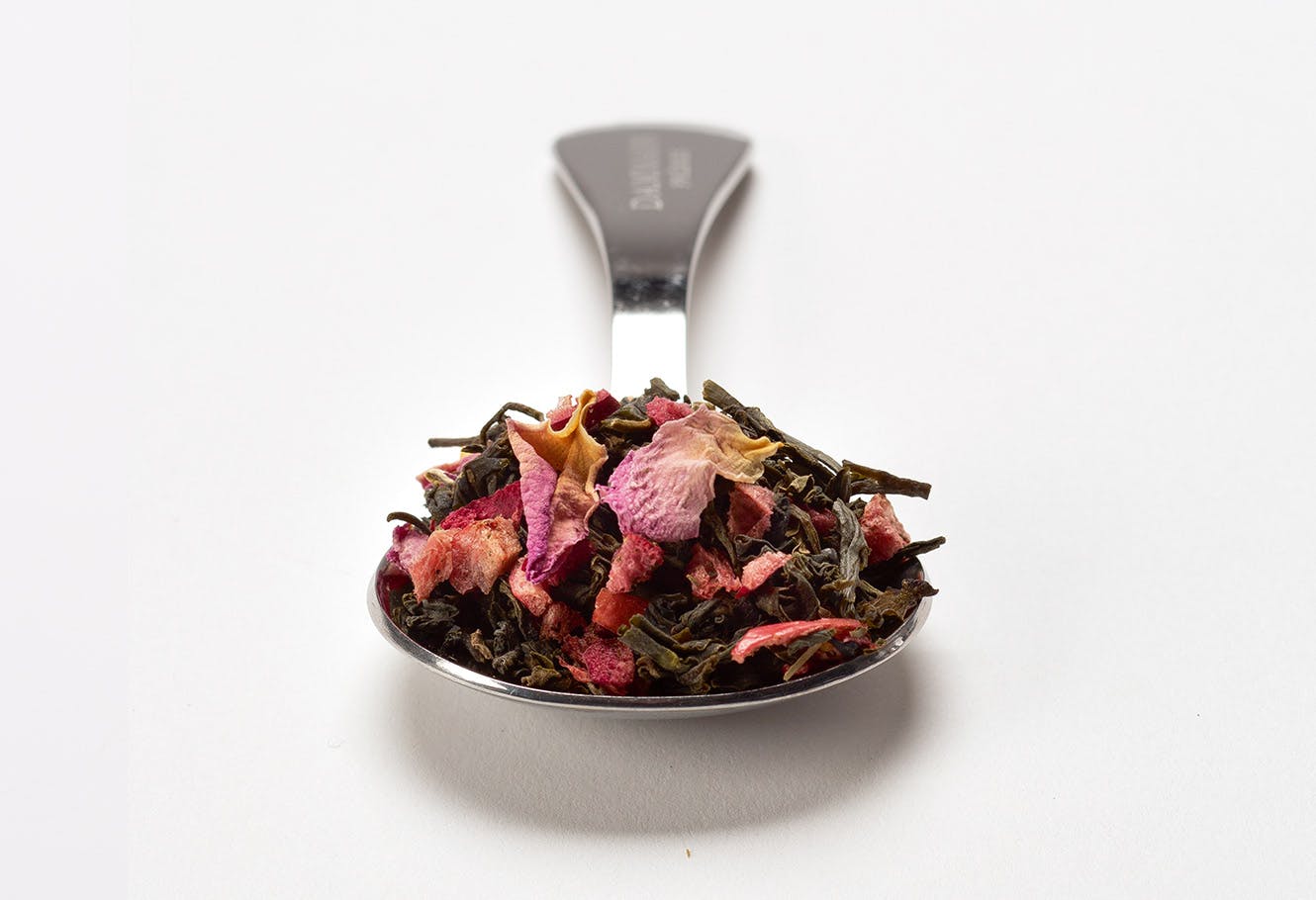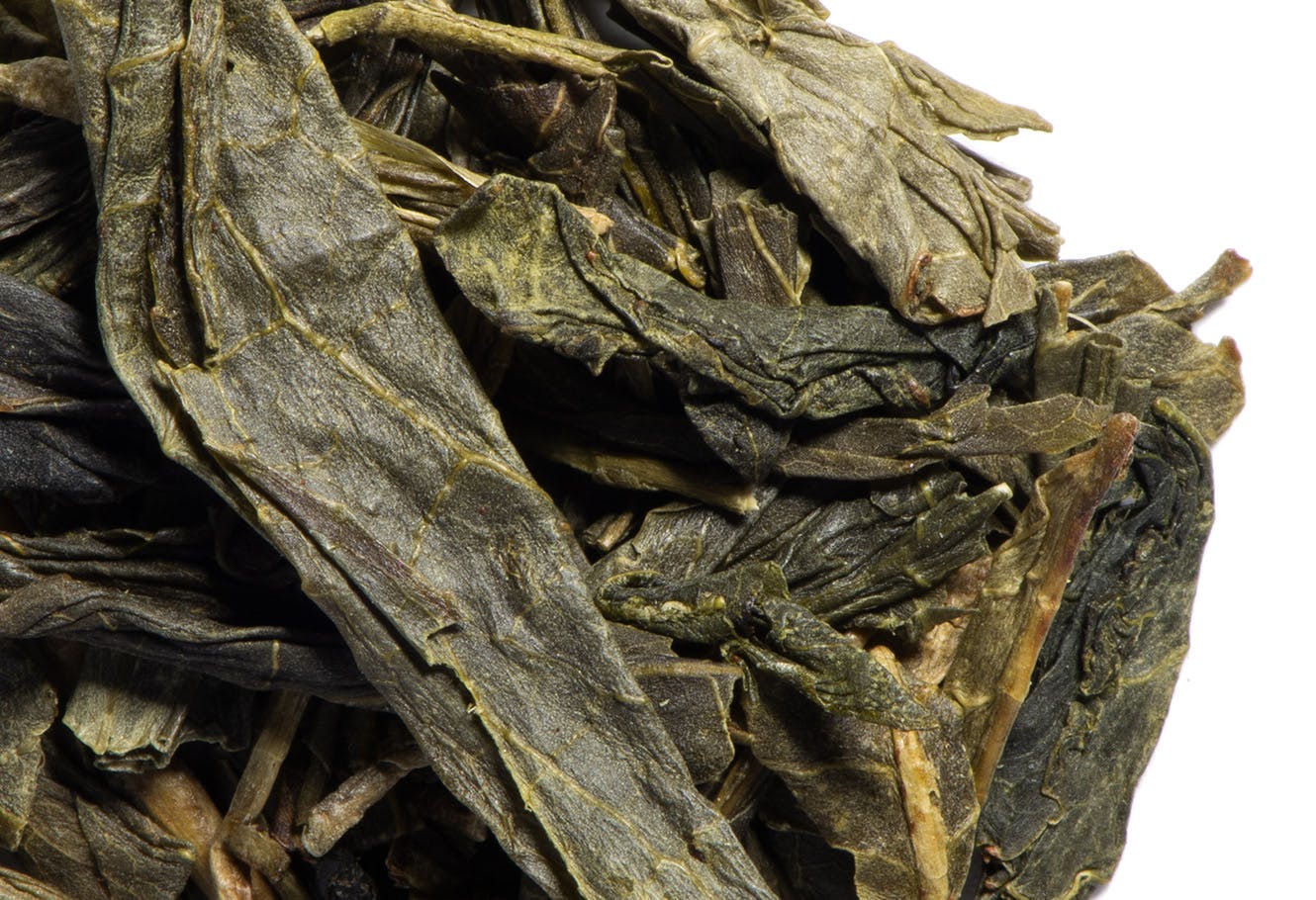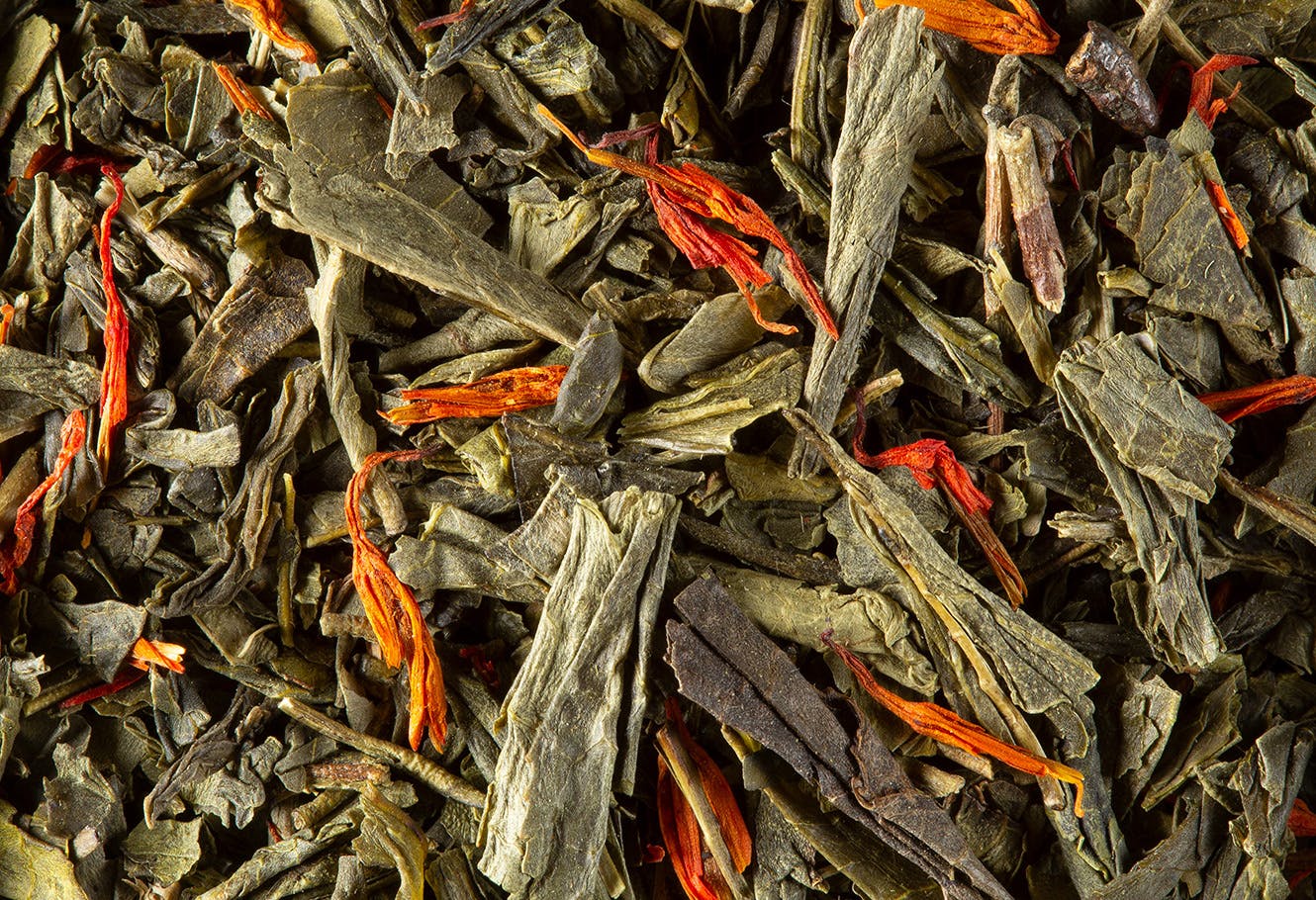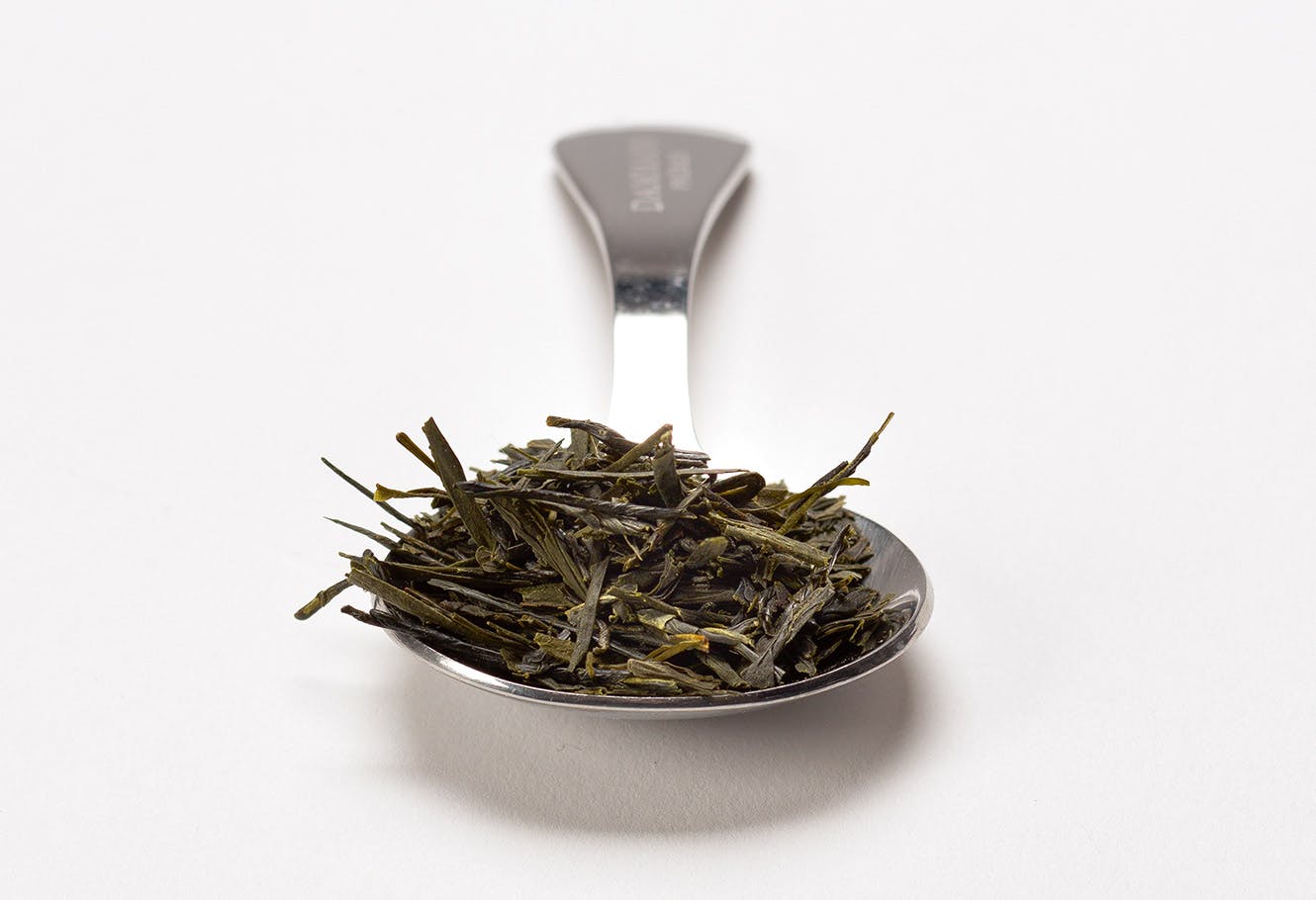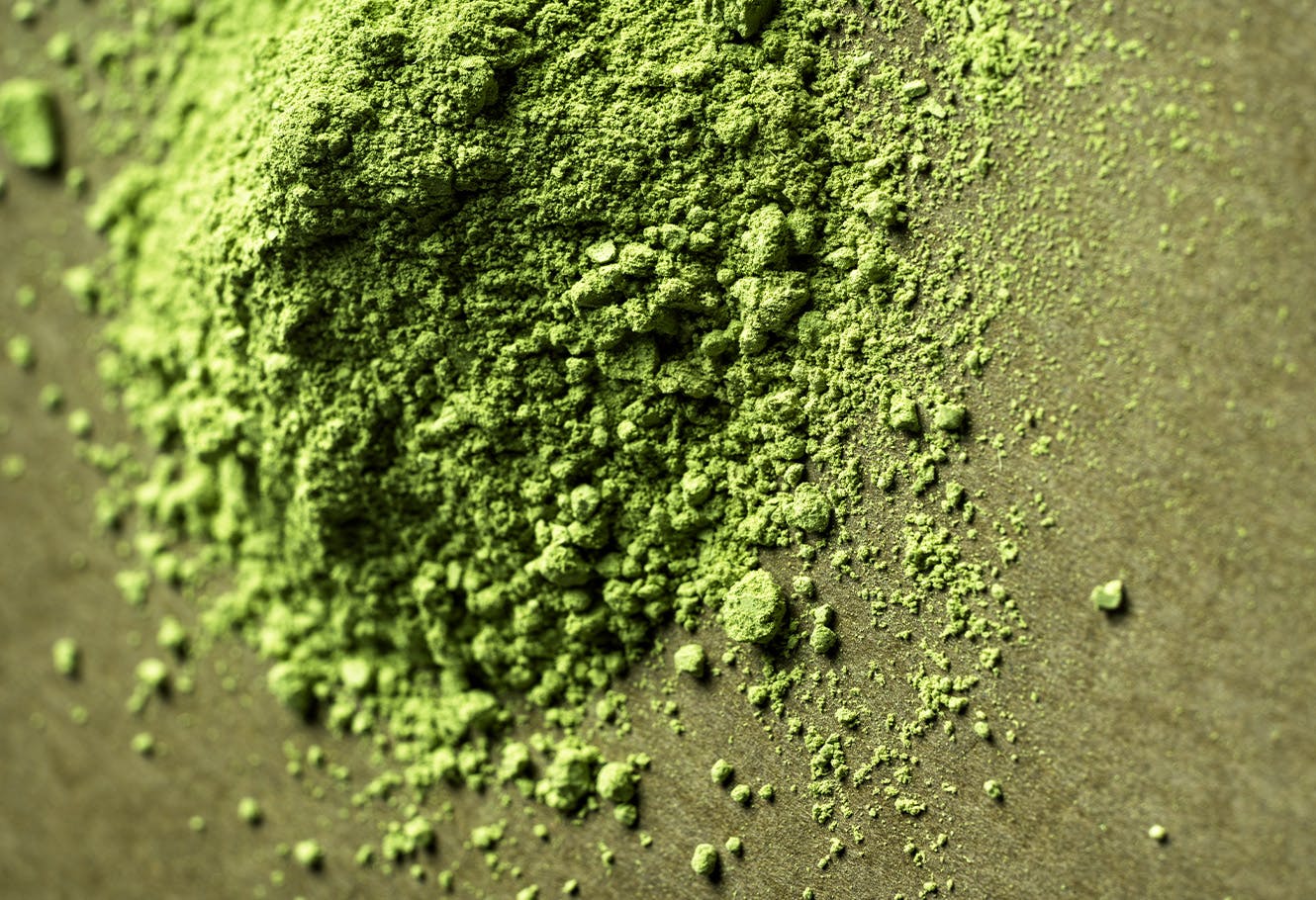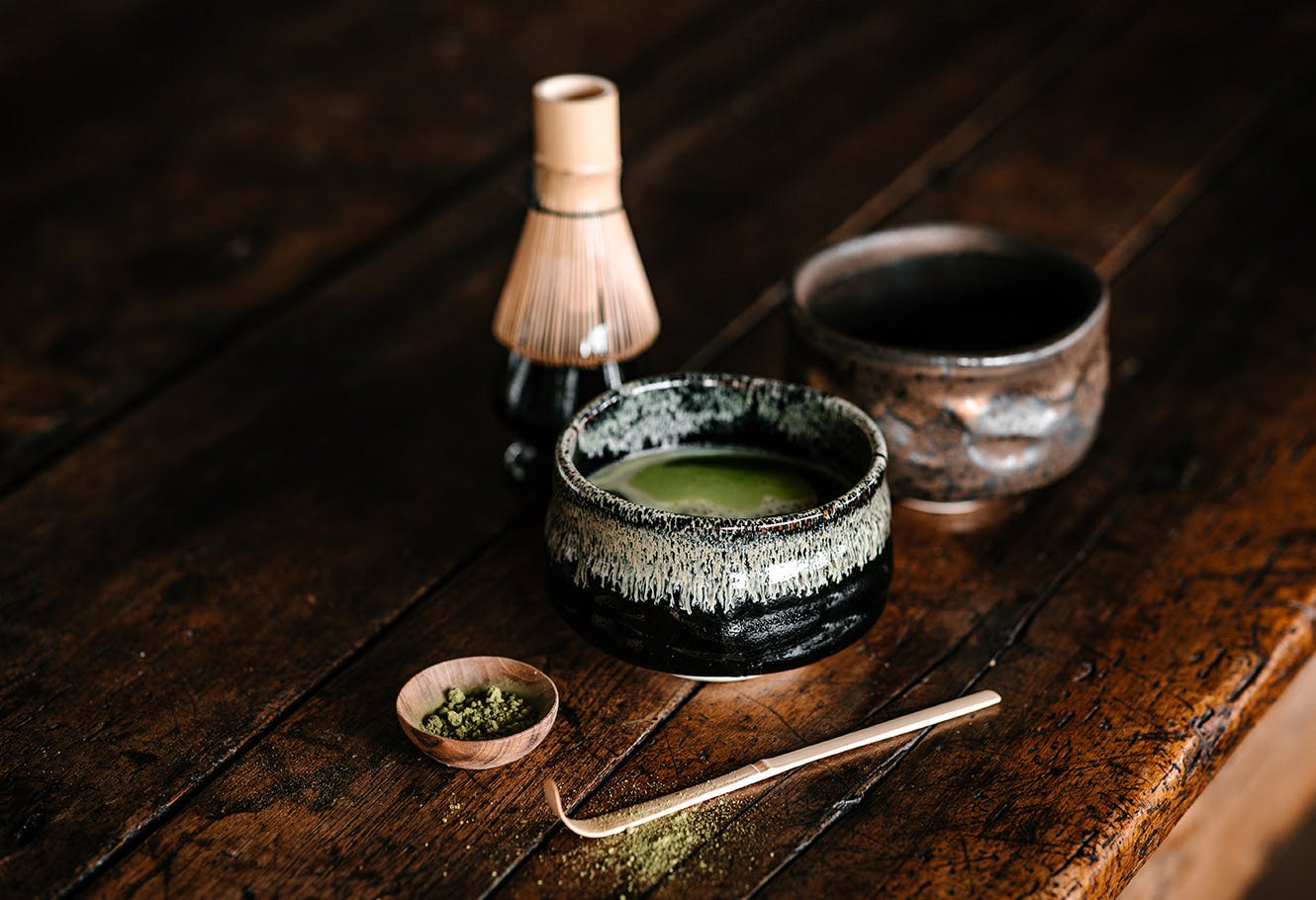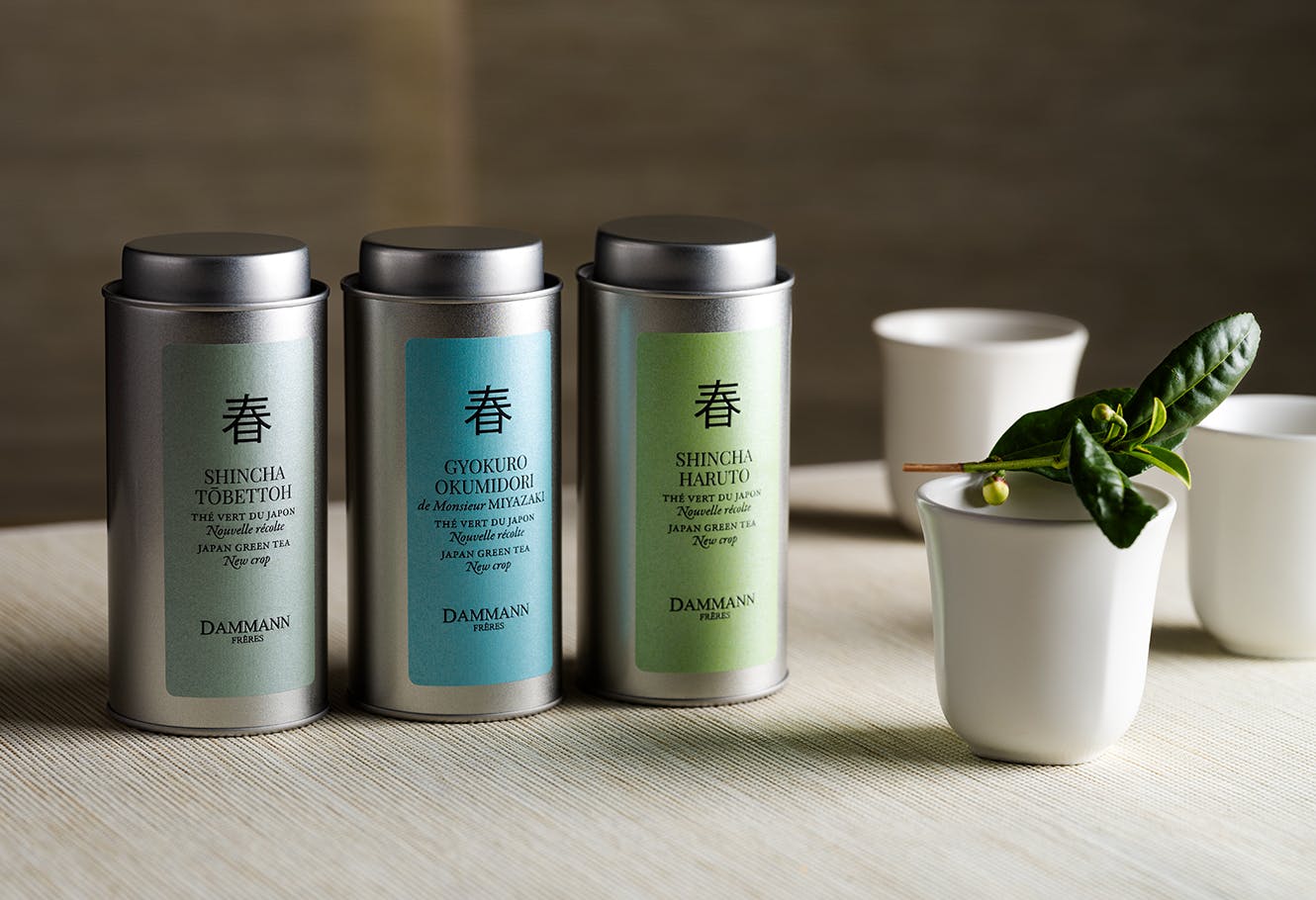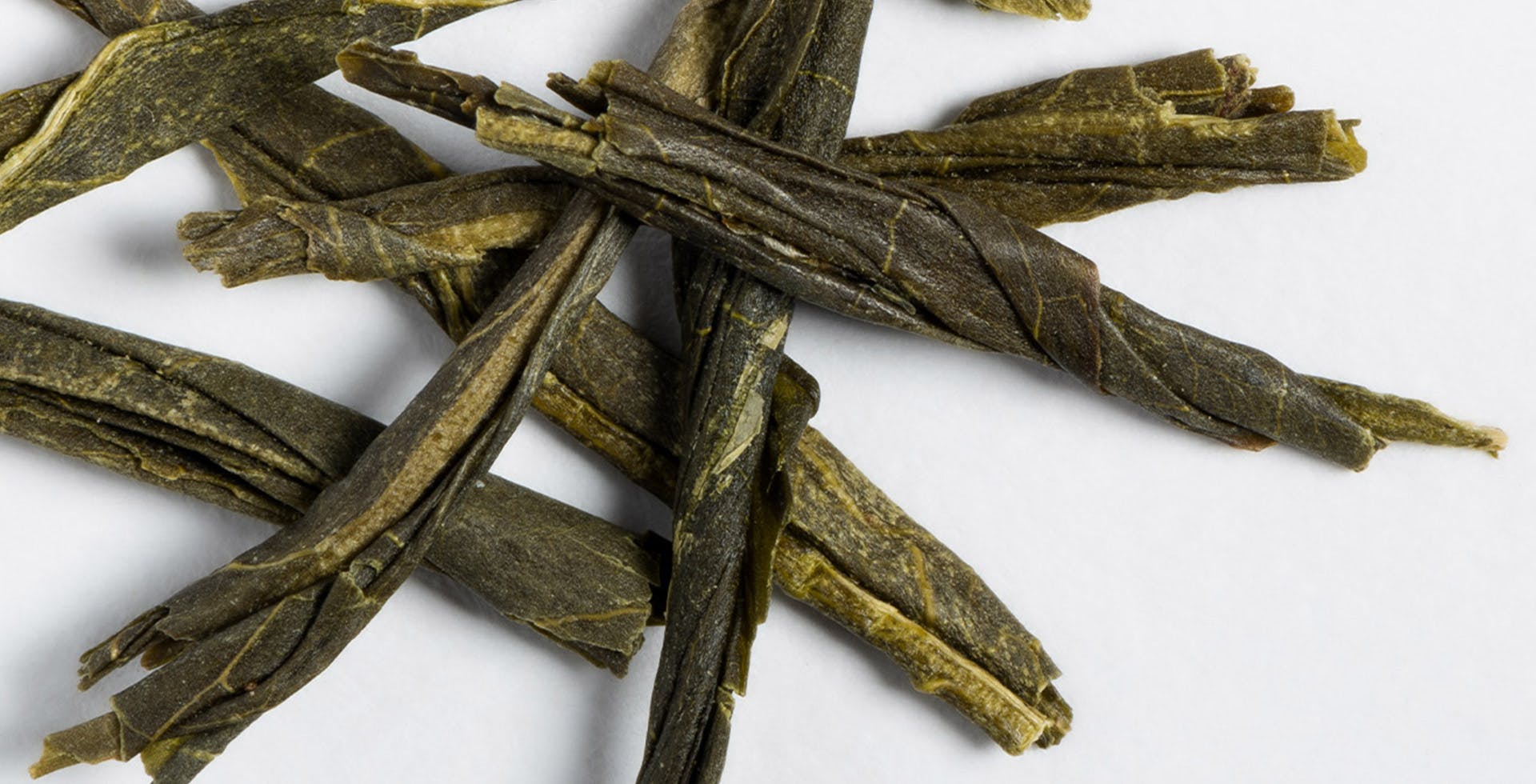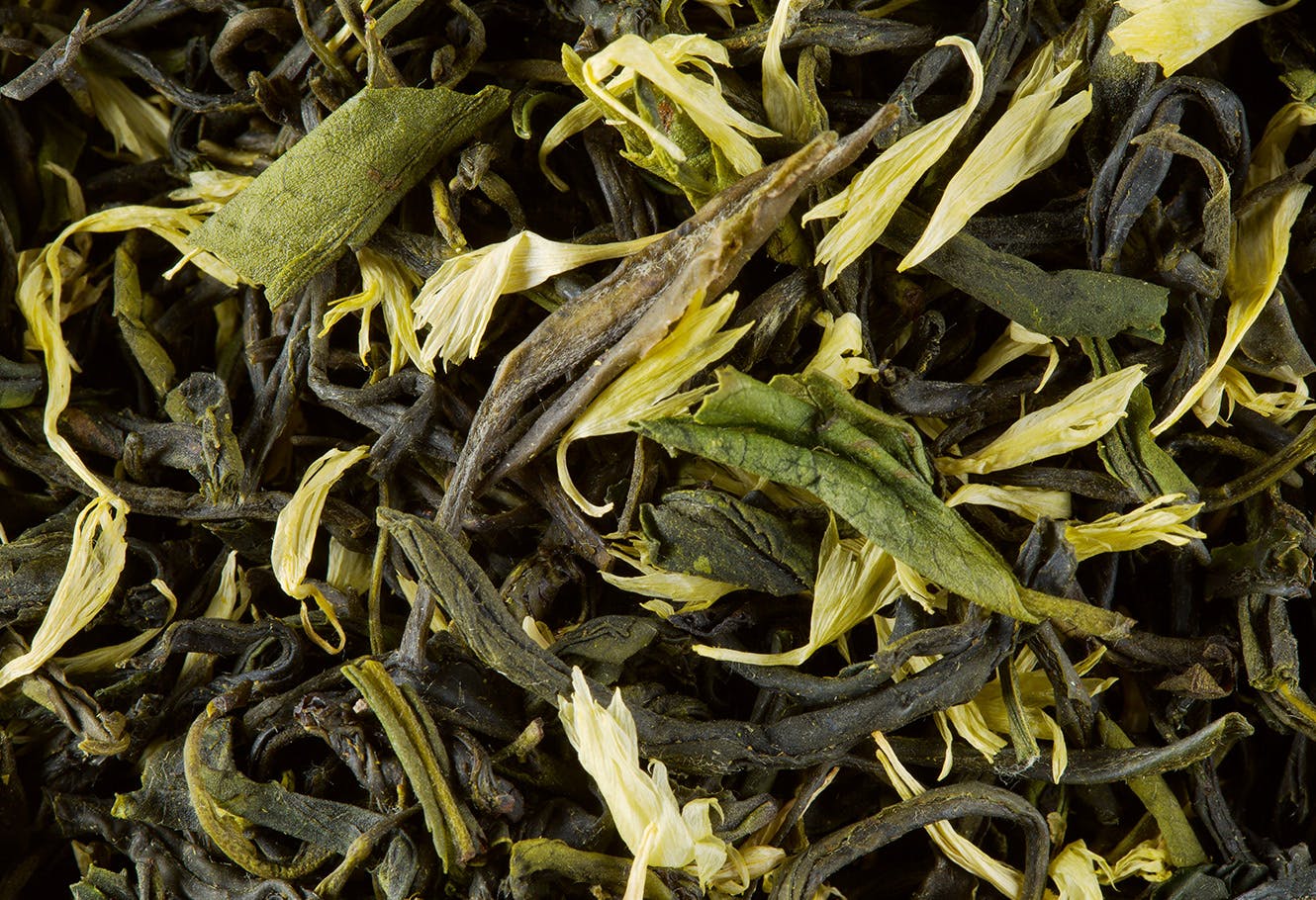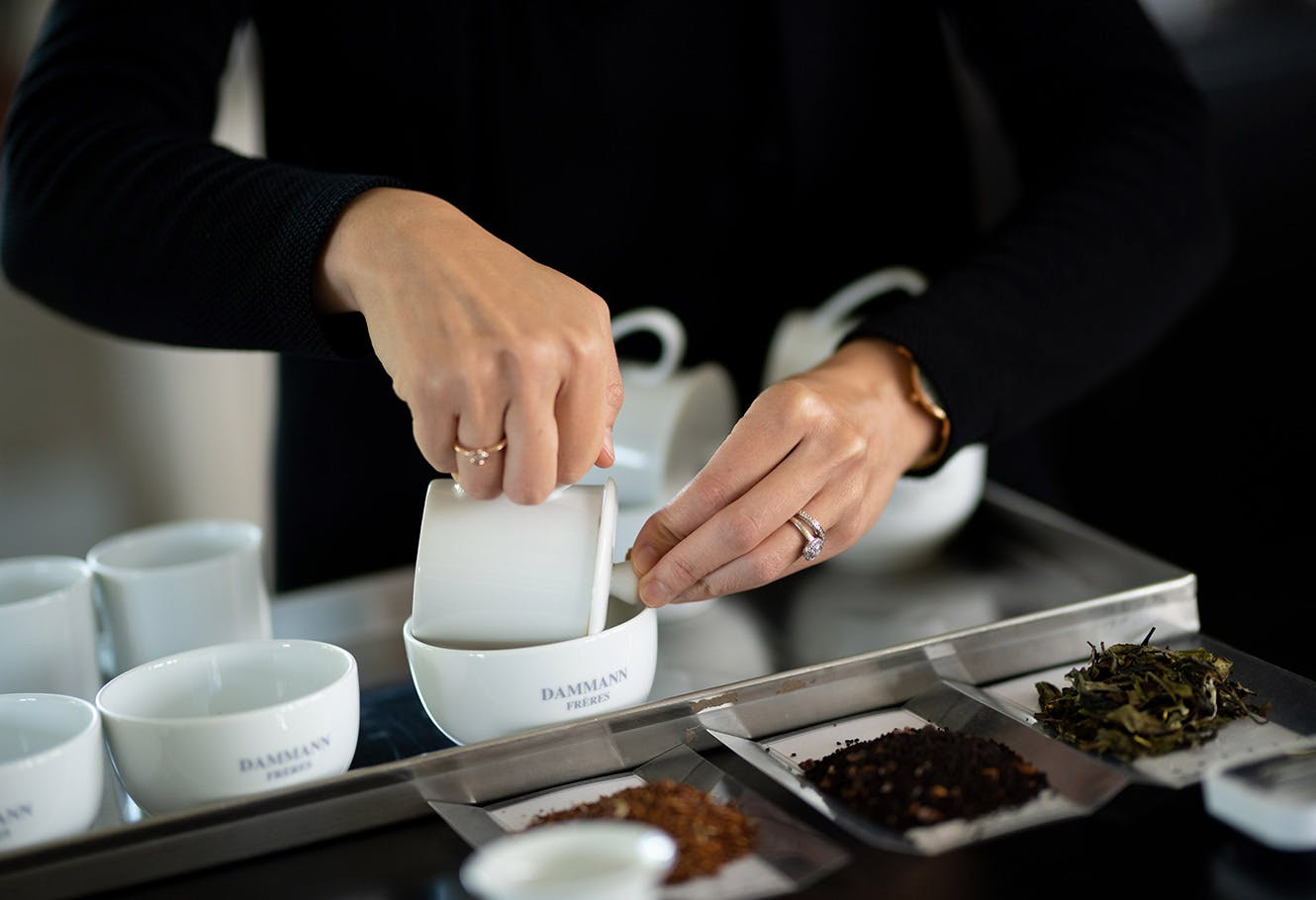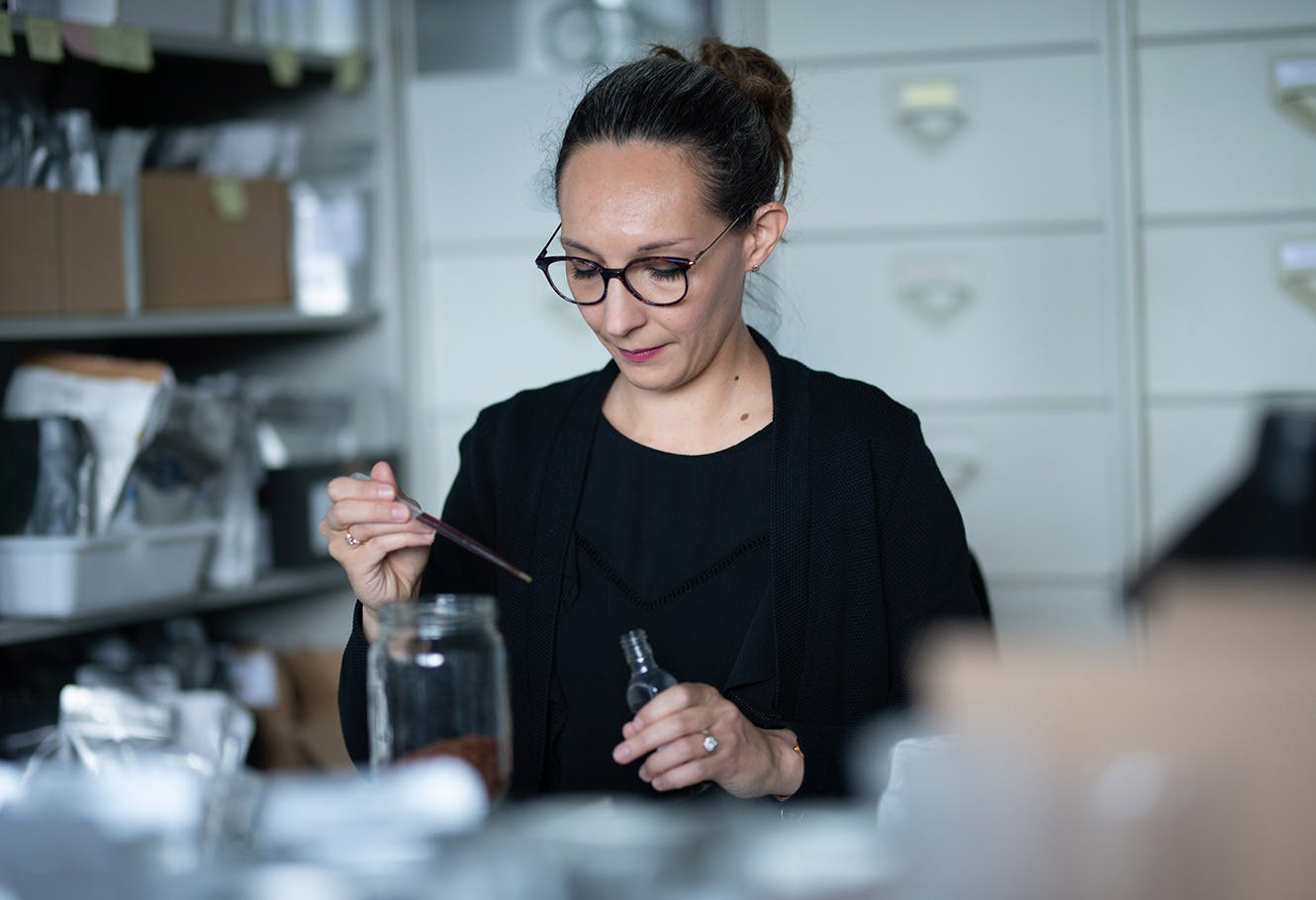What green tea is?
The illustrious origins of green tea can be traced back to two main countries: China and Japan. The range of teas from these two countries differ widely in appearance and aroma, but they share a tradition of producing from the first harvests (Xin Cha in China and Shincha in Japan). Just as winter draws to a close, the sweet flavor and herbal freshness of these teas fascinates connoisseurs. Although green tea is often associated with well-being, it is also delicious drunk for pleasure. With its innumerable terroirs and prestigious labels of quality, it has more than earned its place in the world of gastronomy.
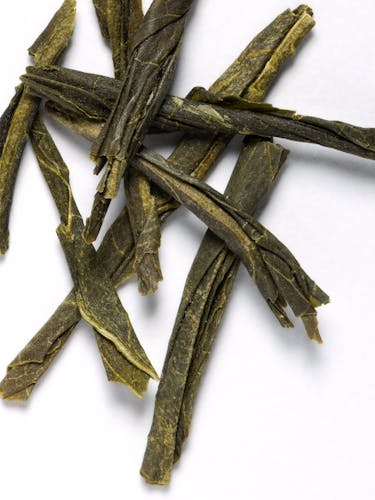
The natural oxidation reaction begins as soon as the tea shoots are picked. This reaction is encouraged for black teas, but for green teas it is important to prevent it from occurring. The fixing stage, when the leaves are exposed to high temperatures of 100 to 200°C, destroys the enzymes responsible for oxidation.
This stage can be carried out either using dry heat (in a wok - the traditional Chinese method) or steam (the traditional Japanese method).
The leaves are then rolled to free the aromas they contain and dried in a wok or oven (to reduce the water content to 2-3%).
During the rolling stage, the leaves are also shaped to take on a specific form characteristic of the country, region, etc.
In China, green tea is generally twisted. In Japan, most teas are shaped into «pine needles» and must meet a strict classification. This process can be carried out either manually or by a machine.
Our selection of green teas
Our articles on green tea
Our articles on green tea
